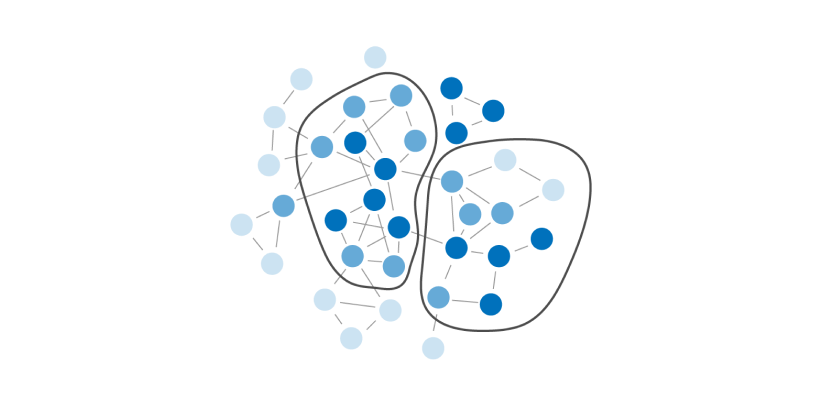Project Areas
The NE PGCoE is engaged in numerous concurrent projects with the aim of developing and establishing a genomic pathogen surveillance network in the United States. These projects leverage our expertise in development of new molecular tools, data analysis and visualization, and data integration and management and address both key local pathogens and nationwide priorities. This multi-scale approach includes implementation of new laboratory and bioinformatic techniques into Massachusetts Department of Public Health workflows, increased coordination on sample acquisition and data analysis across the NE PGCoE and regional partners, and interfacing with the four other PGCoE centers across the United States to promote multi-state collaboration. While these projects have been initiated in response to specific pathogens, they collectively provide a foundation for a pathogen-agnostic genomic surveillance network that is malleable enough to be responsive to changing public health needs across the region.
The strength of the PGCoE comes from our ability to collaborate and work as a network, as seen from our diverse set of partners and expertise. Feel free to contact us at questions@nepgcoe.org to learn more about a specific focus area or to inquire about collaboration.
Laboratory methods for multi-pathogen sequencing
Using both metagenomic and amplicon-based approaches, the NE PGCoE aims to develop and optimize both laboratory and computational methods for whole genome sequencing of many different pathogens, allowing public health scientists to generate data from smaller sample volumes and more diverse sample sources.
Expanding the use of amplicon-based sequencing
Amplicon-based sequencing played a crucial role during the COVID-19 pandemic, allowing for the generation of complete viral sequences from even low-titer samples. The Grubaugh Lab is now applying these techniques to bacterial pathogens and multi- pathogen panels to expand our capacity for generating sequence data from a wide variety of pathogens.

Pooled metagenomic sequencing
With the advent of pooled metagenomic sequencing, a single sample can be used to detect and sequence a multitude of different pathogens. This process, however, is often cost-prohibitive to public health settings. The NE PGCoE is developing and implementing new metagenomic sequencing protocols (both laboratory and bioinformatic) that allow for the use of metagenomic sequencing in routine public health pathogen surveillance.
Bacterial genomic surveillance and antibiotic resistance monitoring
The NE PGCoE is developing protocols for sequencing bacterial pathogens from a wide variety of sample types, including residual diagnostic swabs. This approach will increase the number of samples available for to genomics-informed surveillance of bacterial pathogens and identification of antimicrobial resistant strains. Due to recent detection of multi-drug resistant gonorrhea in Massachusetts, we are focusing initial efforts on N. gonorrhoeae, with the hope of expanding to other bacterial pathogens in the future.

Culture-independent sequencing development
Being able to acquire genetic material from non-cultured bacterial samples (e.g., residual diagnostic swabs) will diversify the sample sources and types available for molecular investigation and genomic epidemiology.
Image:
Created with BioRender.com

Antimicrobial detection from bacterial pathogen sequences
In collaboration with internal and external partners, we are exploring computational methods to extract antimicrobial resistance information from whole and partial genome sequences.
Image:
'Antibiotic' by Arif Hariyanto from Noun Project (CC BY 3.0)
Pandemic preparedness for high-containment pathogens
Working with our partners at Boston University NEIDL, we are developing sample transfer and sequencing approaches that can be used on high- containment and select agent pathogens.

To be better prepared to respond to even the most dangerous viral outbreak in our communities, we are working to develop protocols and procedures that enable rapid responses to high-containment pathogens. These efforts include:
- Establishment of “always-on” regulatory and legal agreements for data and sample transfer to and from the NEIDL.
- Maintenance of BSL-3, BSL-4, and select agent laboratory space.
- Development of sequencing protocols that can be performed under strict biosecurity conditions.
- Validation of inactivation protocols that enable non-NEIDL partners (including MA DPH) to conduct genomic sequencing on a greater selection of pathogens.
Mechanisms for data sharing and collaborative pathogen response
A key component of pandemic preparedness and pathogen genomic surveillance is the ability to establish workflows that allows for the transfer and sharing of both data and samples. Through the establishment of pathogen-agnostic, multi-institutional agreements, such as IRBs, MTAs, and DUAs, the NE PGCoE hopes to establish the necessary framework to allow for quick responses to pathogen threats.
Regional surveillance of viral pathogens
Building on our collaborative efforts, developments in wet and dry lab methods, and establishment of end-to-end genomic epidemiology workflows, we are enhancing our ability to track and respond to viral respiratory pathogens throughout the northeastern United States. We are building cost-effective, multi-pathogen surveillance systems that allow us to maintain awareness of—and ultimately respond to—both routine and uncommon viral threats to public health.

Pan-respiratory pathogen surveillance
SARS-CoV-2 is not the only respiratory pathogen affecting the New England region. Using metagenomic and amplicon sequencing techniques developed by our center, we are conducting regular surveillance on common (and uncommon) respiratory viruses in our region. Cutting-edge sequencing technologies enable us to reduce laboratory time and resources, so we can spend more time ensuring our results lead to appropriate public health action.

Responding to local outbreaks
The expertise and cutting-edge genomics technologies available to the NE PGCoE have already enabled us to respond to a wide variety of unexpected local outbreaks. For example, we were able to conduct rapid whole genome sequencing of local Hepatitis A cases, providing important information about both local and regional transmission patterns.